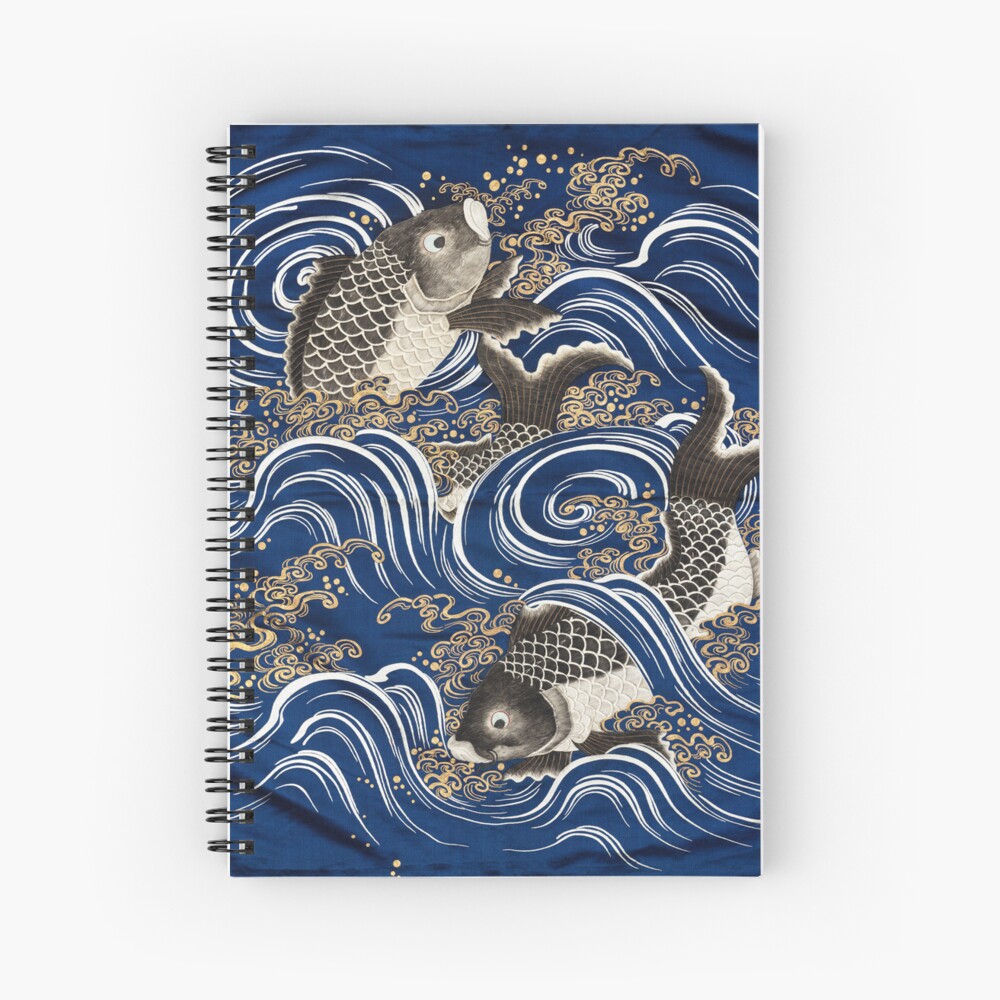Have you ever come across a piece of artwork that immediately catches your eye with its intricate detailing and vibrant colors? The Meiji period in Japan was known for its beautiful and ornate artwork, and this fukusa (gift cover) is a prime example of the artistic talents of the time.
This fukusa, featuring a carp swimming through waves, showcases true artistry. The vibrant colors used to depict the carp’s scales and the waves bring the piece to life. It is no surprise that the fukusa was traditionally used to wrap gifts and serve as a decorative item.
The Meiji period, which lasted from 1868 to 1912, was a time of great change and modernization in Japan. It was during this time that the country opened up to the outside world and began to adopt many Western customs and technologies. This fukusa, with its blend of traditional Japanese artistry and modern techniques, perfectly embodies the spirit of the Meiji period.
Whether you’re an art lover or simply appreciate the cultural significance of this piece, this fukusa is sure to make a thoughtful and meaningful gift for anyone with an interest in Japanese history and culture. Imagine hanging it as a piece of wall art or using it to adorn a special gift. Either way, it is sure to be appreciated and admired.
The Art of the Meiji Period
As mentioned, the Meiji period was a time of great change and modernization in Japan. This was reflected in the art of the time, which saw a blend of traditional Japanese styles and techniques with those from the Western world.
One example of this fusion can be seen in the ukiyo-e woodblock prints that became popular during the Meiji period. These prints, which depicted scenes from everyday life, were influenced by Western techniques such as perspective and shading. At the same time, they maintained the bold colors and flat compositions characteristic of traditional Japanese art.
In addition to ukiyo-e, the Meiji period also saw the rise of new art forms such as sculpture and oil painting. These art forms, which were introduced to Japan during the Meiji period, allowed for a greater range of expression and technique.
Overall, the art of the Meiji period reflects the dynamic and rapidly-changing nature of the time. This fukusa, with its intricate detailing and vibrant colors, is a testament to the creativity and innovation of the artists of the Meiji period.
In conclusion, this fukusa is a truly unique and striking piece of art that is sure to be appreciated by anyone with an interest in Japanese culture and history. Whether displayed as wall art or used to wrap a special gift, it is a beautiful and culturally significant addition to any collection.



